Discover Atsuta Shrine in Nagoya, a revered spiritual site rich with imperial treasures, sacred deities, and authentic local cuisine.
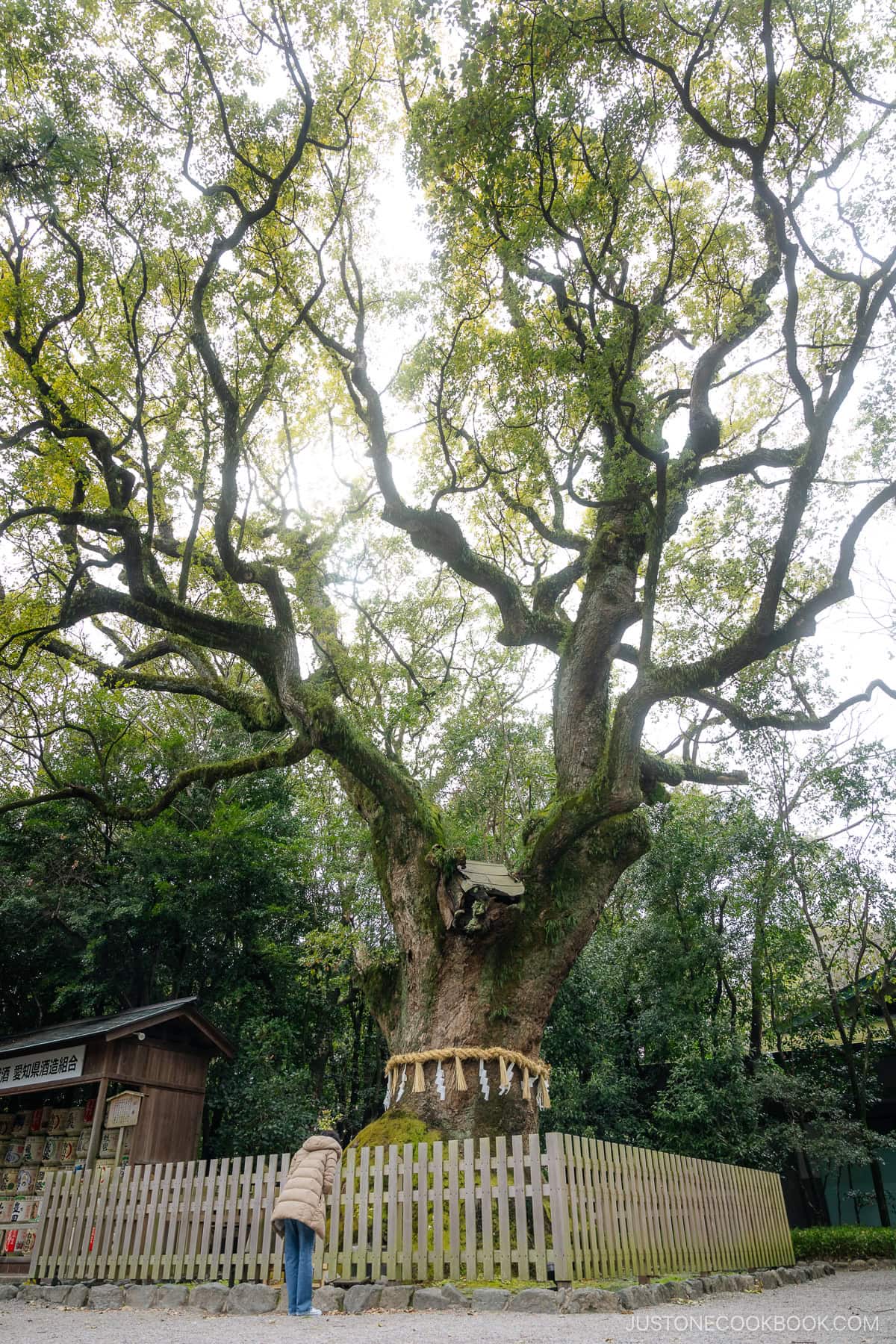
Tucked away in the heart of NagoyaAtsuta Jingu is Japan’s second largest shrine, following only the Great Shrine of Ise in Mie Prefecture. Locals affectionately call it Atsuta-San or Atsuta-Sama, and it has been a revered site for over 1,900 years. This serene sanctuary offers a peaceful retreat from the city, filled with sacred artifacts and time-honored ceremonies. It’s the ideal place to experience Japan’s deep cultural heritage. We’ll guide you through everything you can explore at this historic shrine.
How to Get to Atsuta Shrine
From Meitetsu Nagoya Station, take the Meitetsu Line to Jingumae Station. This will take approximately 5 minutes and cost 250 yen one way per person. From the station, walk a couple of minutes to the shrine’s entrance.
Alternatively, take the JR Tokaido Line from Nagoya Station to Atsuta Station, which will take approximately 10 minutes and cost 200 yen one way per person. It will take 5 to 10 minutes to the shrine’s entrance by foot.
History of Atsuta Shrine
Atsuta Shrine‘s history stretches back over 1900 years. The founding of the famous Shinto shrine was recorded in the oldest books in Japan, the Kojiki and Japanesewritten in 712 AD and 720 AD.
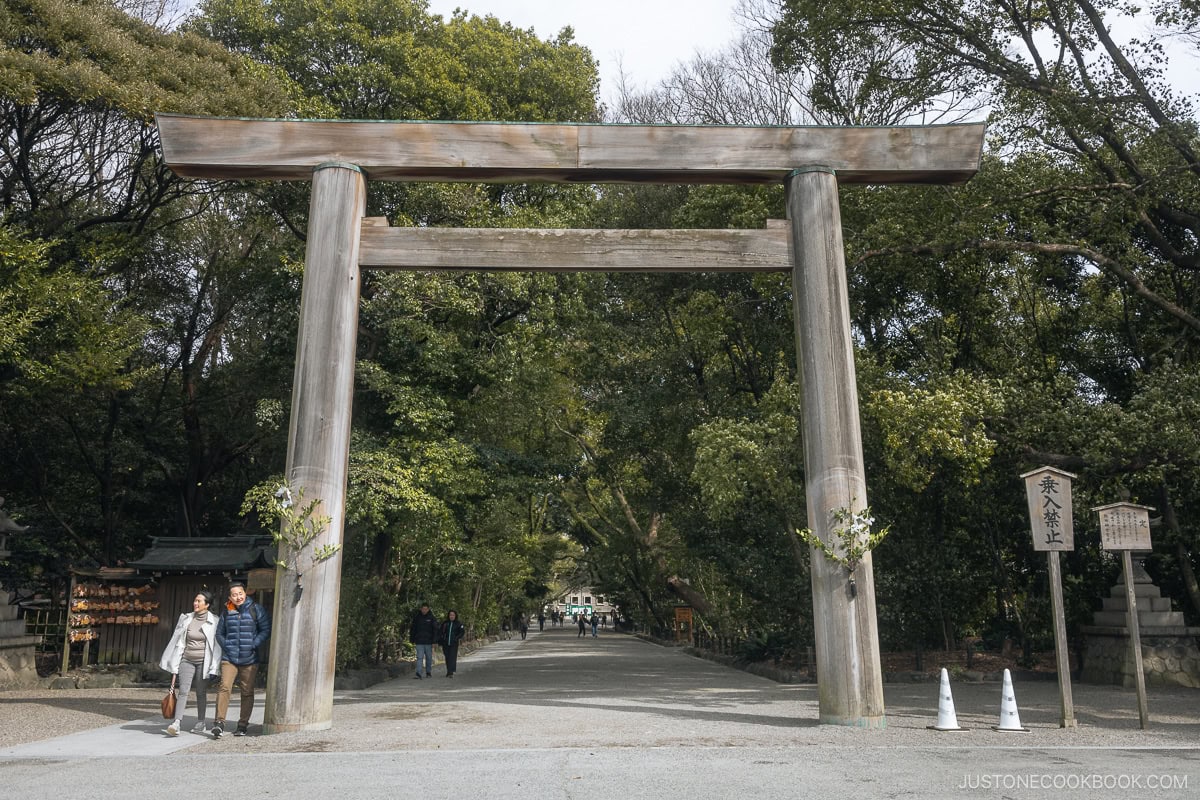

The sacred sword Kusanagi no Tsurugi is one of Japan’s Three Imperial Regalia. According to legend, the god Susanoo slayed an eight-headed serpent that had devoured seven daughters of a grieving family of kunitsukami (gods of the land). In the serpent’s fourth tail, he discovered a sword, which he named Ame-no-Murakumo-no-Tsurugi. After his victory, he presented the sword to the Sun Goddess Amaterasu to resolve an old grievance.
Generations later, Prince Yamato wielded the sword, harnessing its magical powers to cut his way out of a grass fire set by a treacherous enemy. He renamed it Kusanagi-no-Tsurugi (Grass-Cutting Sword).
In the 43rd year of Emperor Keiko’s reign (113 AD), Prince Yamato passed away, leaving the sacred sword and his possessions in a shrine at his widow’s home. Eight years later, these historic relics were moved to the current location of Atsuta Shrine, which enshrines the Sun Goddess Amaterasu. Although the legendary sword is not publicly displayed, replicas based on the Kojiki and Nihonshoki are available in the treasure house.
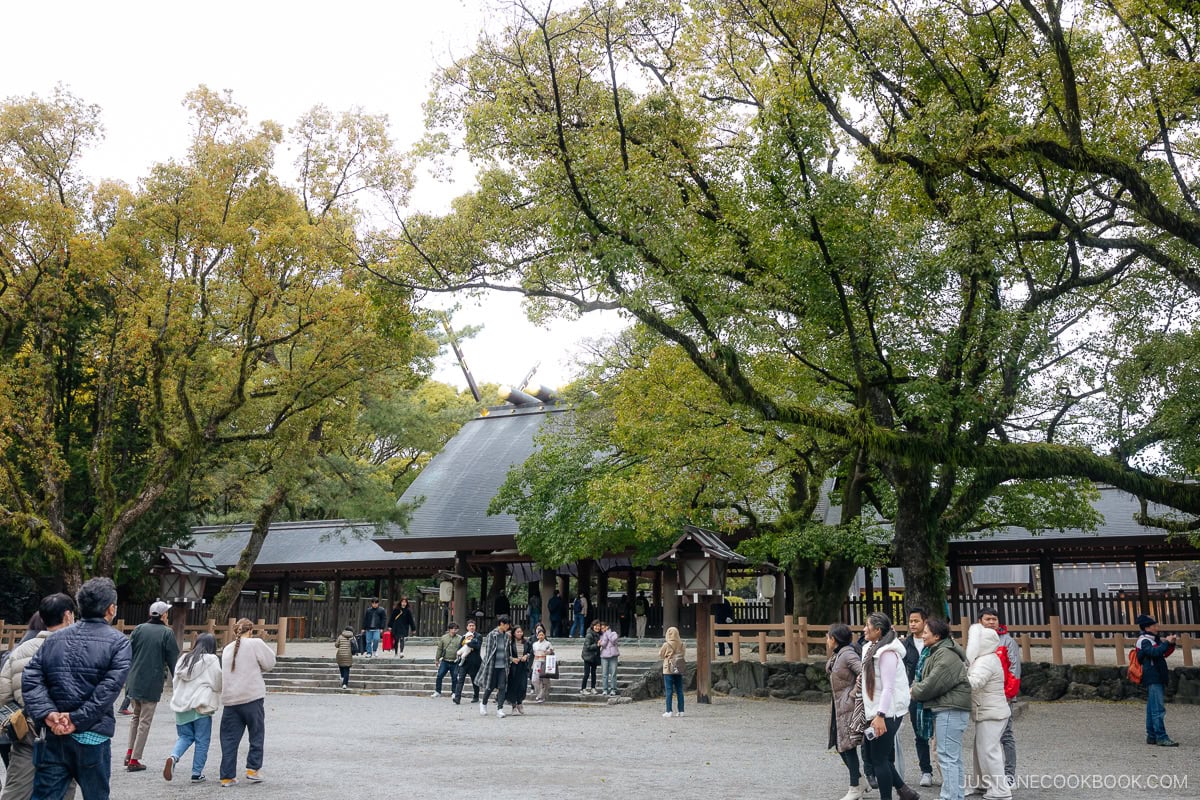

During the Meiji Period (1868 – 1912), the shrine was reconstructed using the “New construction” architecture style, one of the three most important styles in Japanese architecture.
What to do at Atsuta Shrine
The shrine complex spans an expansive 46 acres (190,000 m²) and includes museums, parks, auxiliary shrines, and the main shrine.
As you walk down the long pathways, you’ll feel the history of the shrine whisper through the trees, evoking a sense of mystery and tranquility. On either side, you’ll find a series of structures that are well worth a visit.
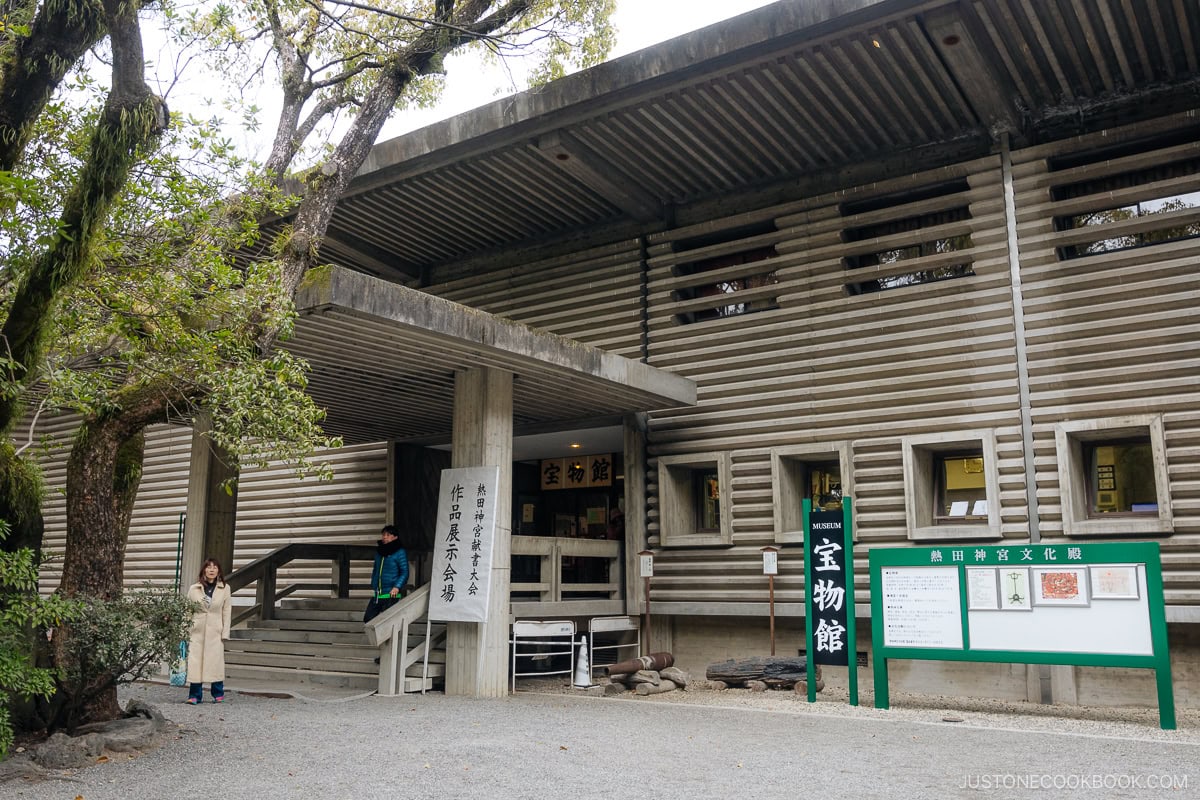

Bunkaden Treasure Hall
First is the Bunkaden Treasure Hall, which houses approximately 4,000 ancient treasures donated by the imperial family, shoguns, feudal lords, and ordinary people. Some of the displayed items are samurai swords, Bugaku (traditional Japanese dance) masks, and koshinpoh (sacred garments, furniture, and utensils used for the enshrined deities). Around 170 of these items have been designated as national treasures or important cultural properties of the prefecture.
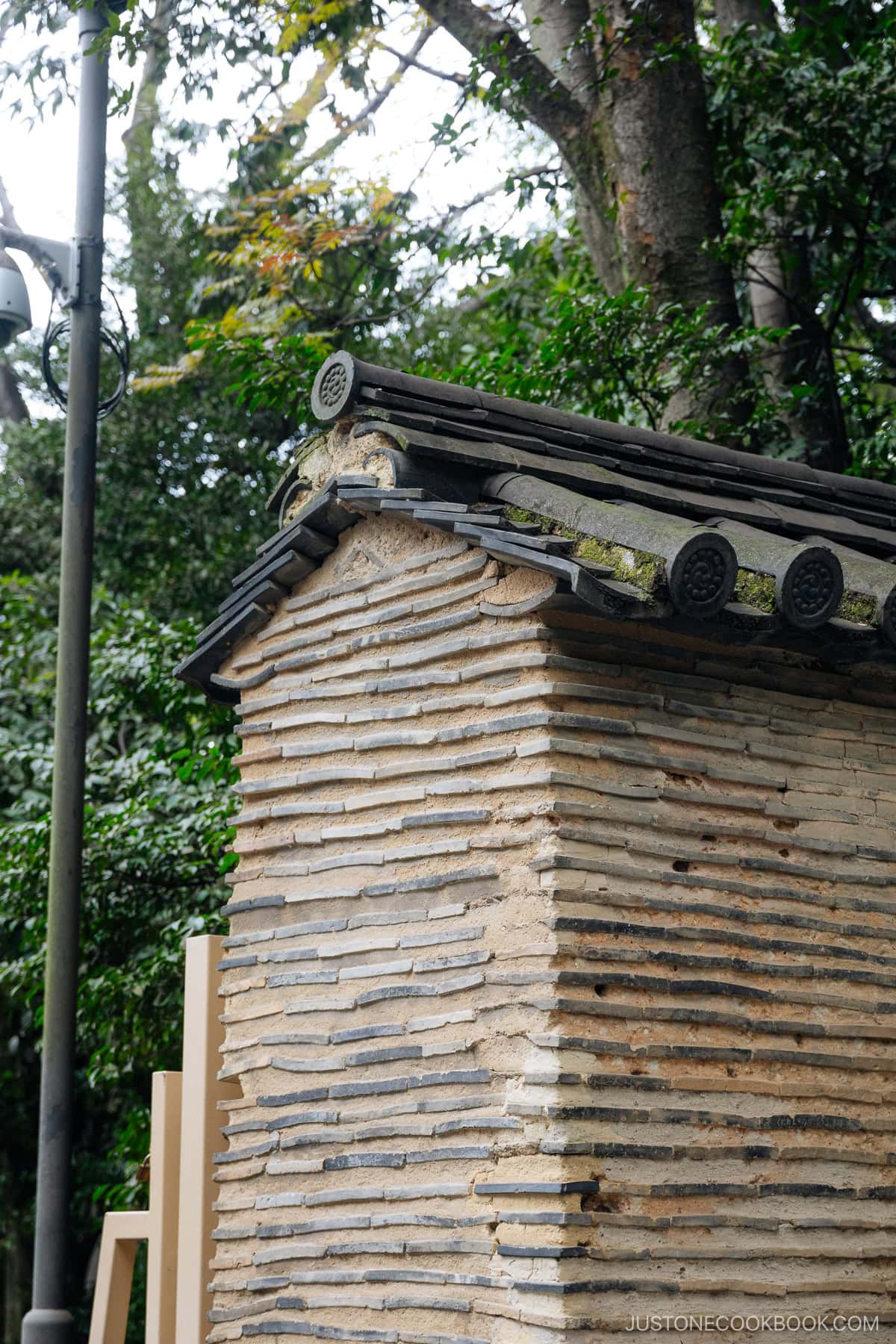

You will also come across the distinctive Nobunaga-Bei wall. This rare and traditional Otsuchi-style wall is made from Japanese My friend roof tiles sandwiched between layers of cement. Its origins trace back to 1560 when warlord Oda Nobunaga stopped at the shrine to pray for victory on his way to the Battle of Okehazama. After his triumph, Oda expressed his gratitude by building this two-meter-high, 400-meter-long wall around the shrine, which still stands today.
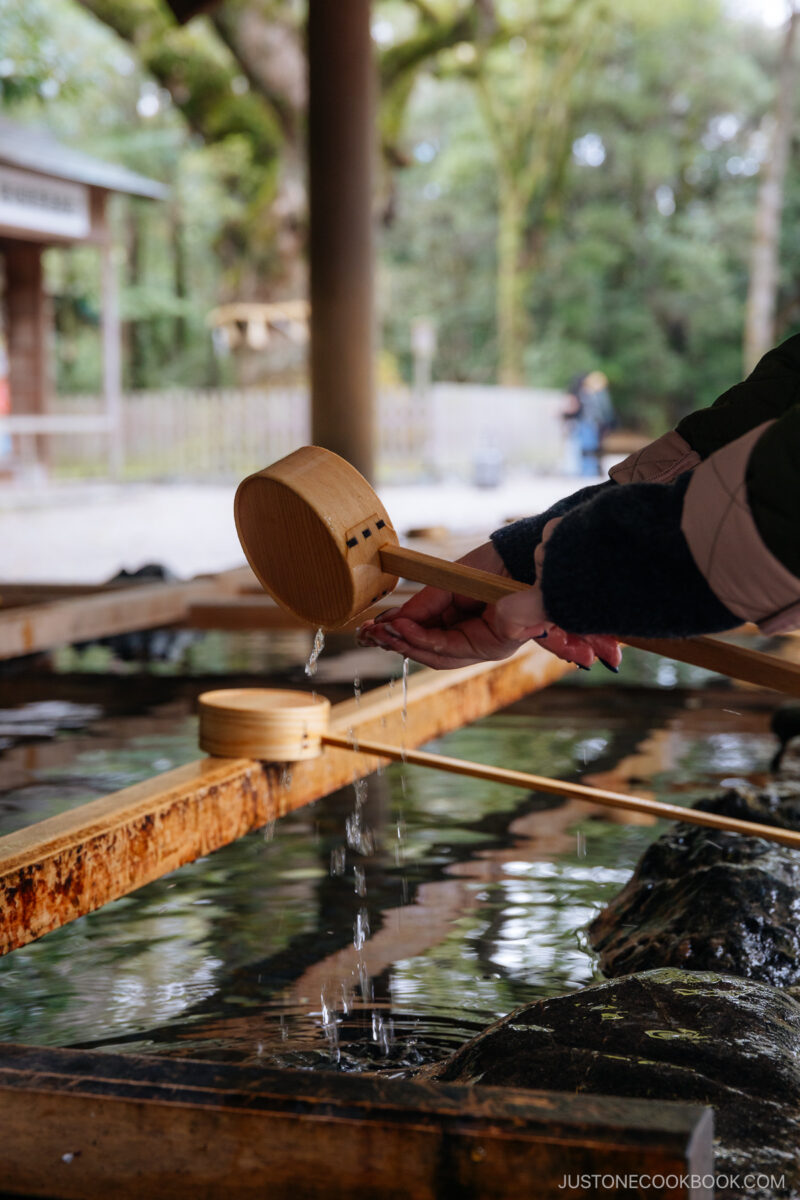

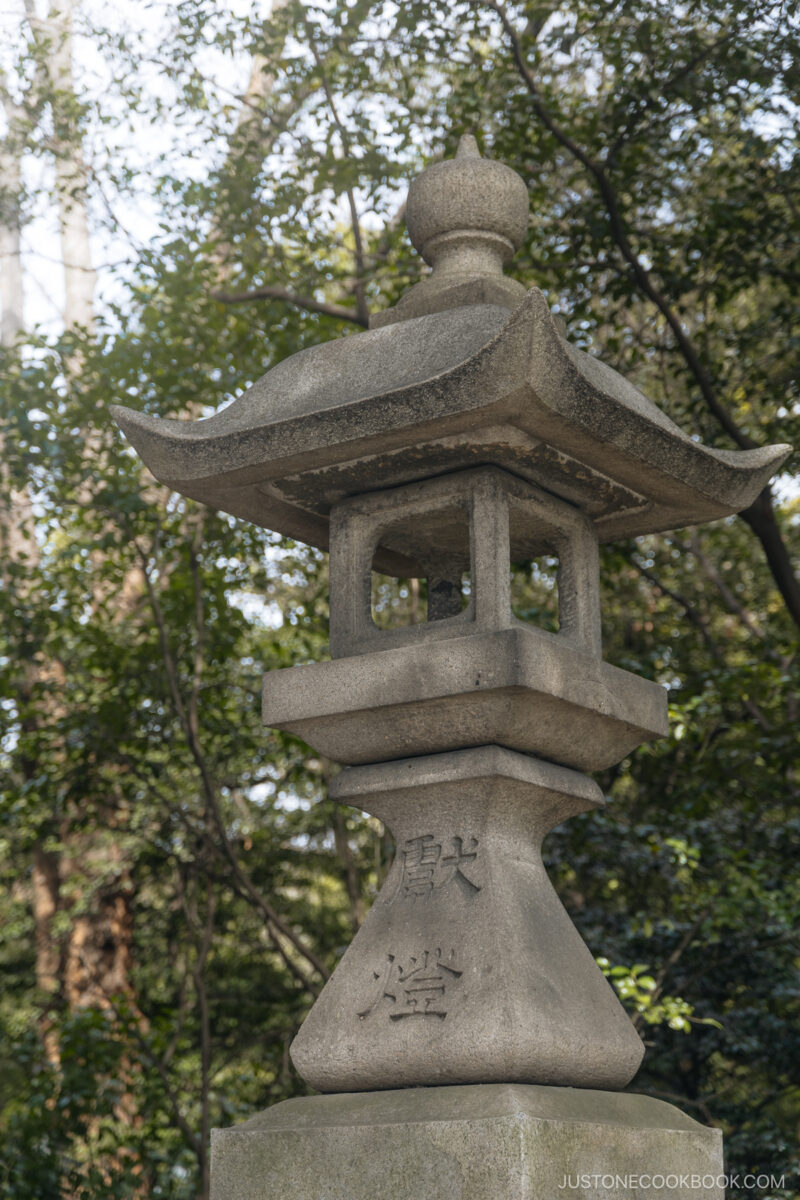

Sacred Camphor Tree
Amidst the countless trees in the dense forest, keep an eye out for the 1,000-year-old Goshinboku. This sacred camphor tree is believed to have been planted by Kukai, also known as Kobo Daishi, a renowned Buddhist priest. It is said that the tree radiates energy, and visitors can pray here to receive a bit of its power.
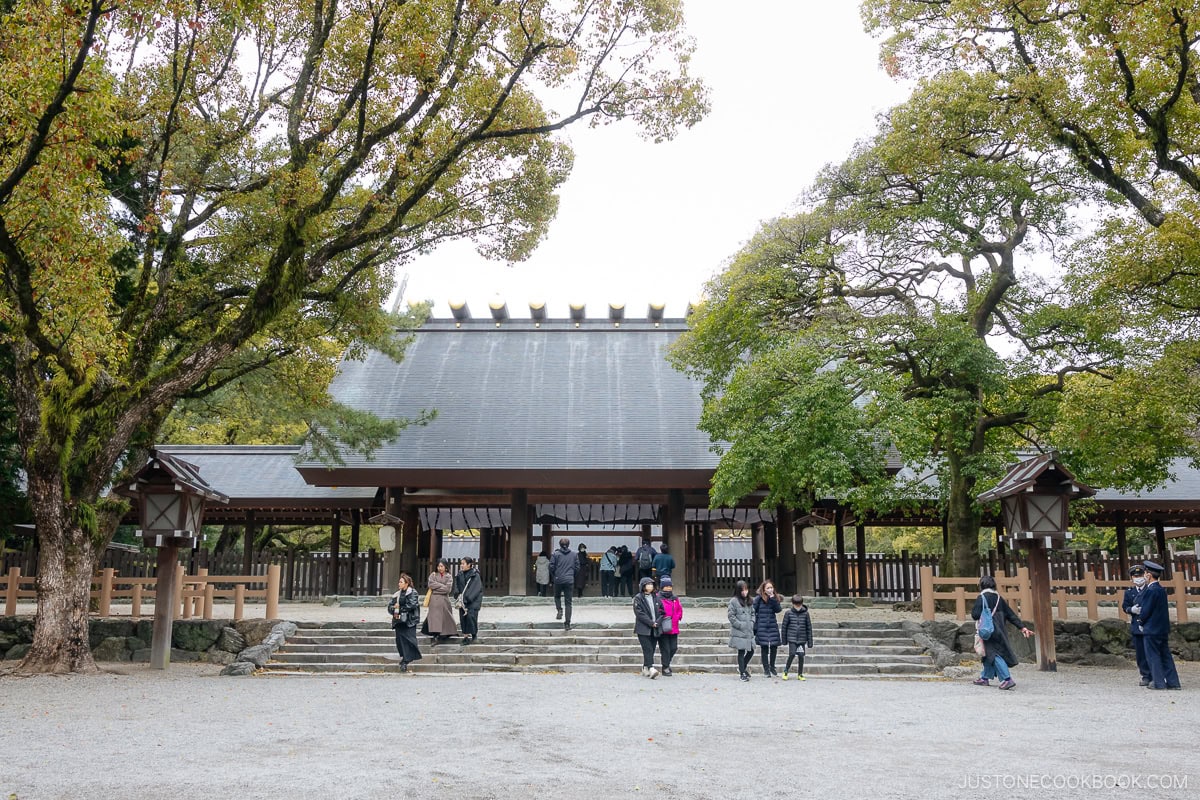

At the center of the grounds is the Yes (main shrine). From the offering box, you can make your prayers and catch a glimpse of the central shrine. However, as with many other shrines in Japan, you cannot enter the interior. The Sun Goddess Amaterasu and the legendary Kusanagi-no-Tsurugi are enshrined here.
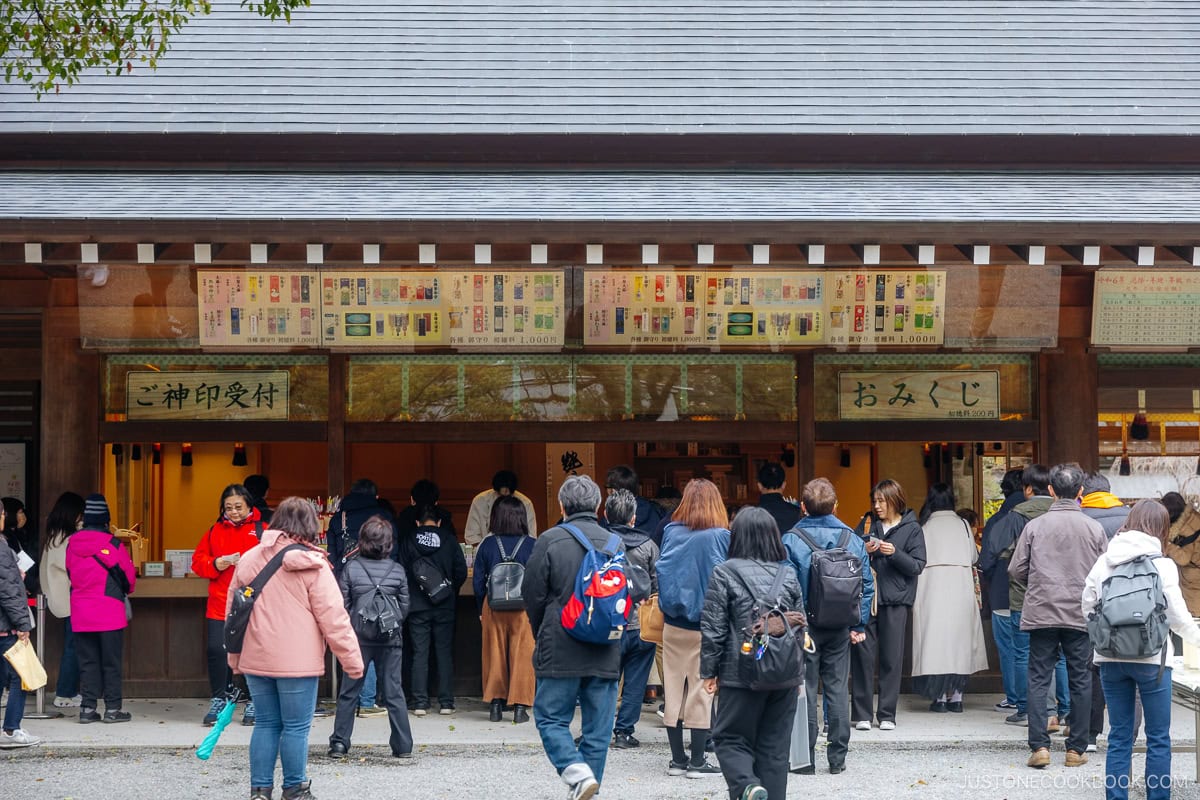

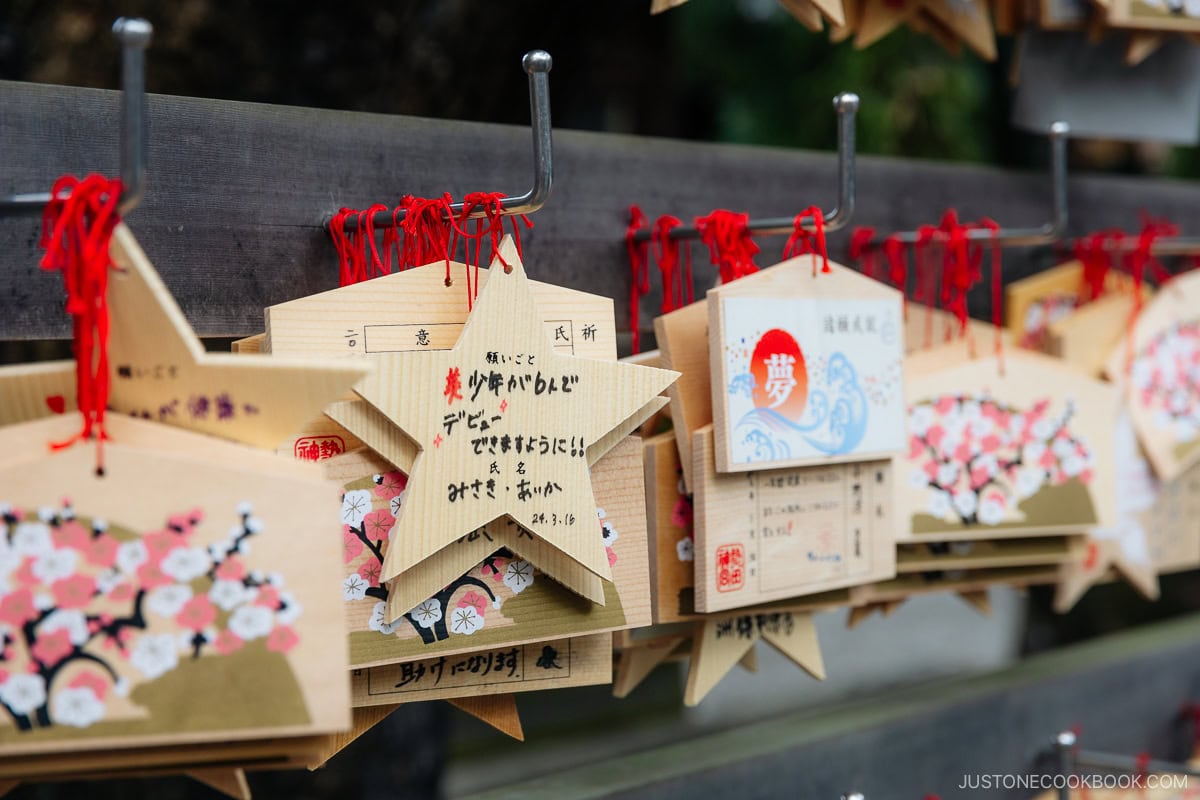

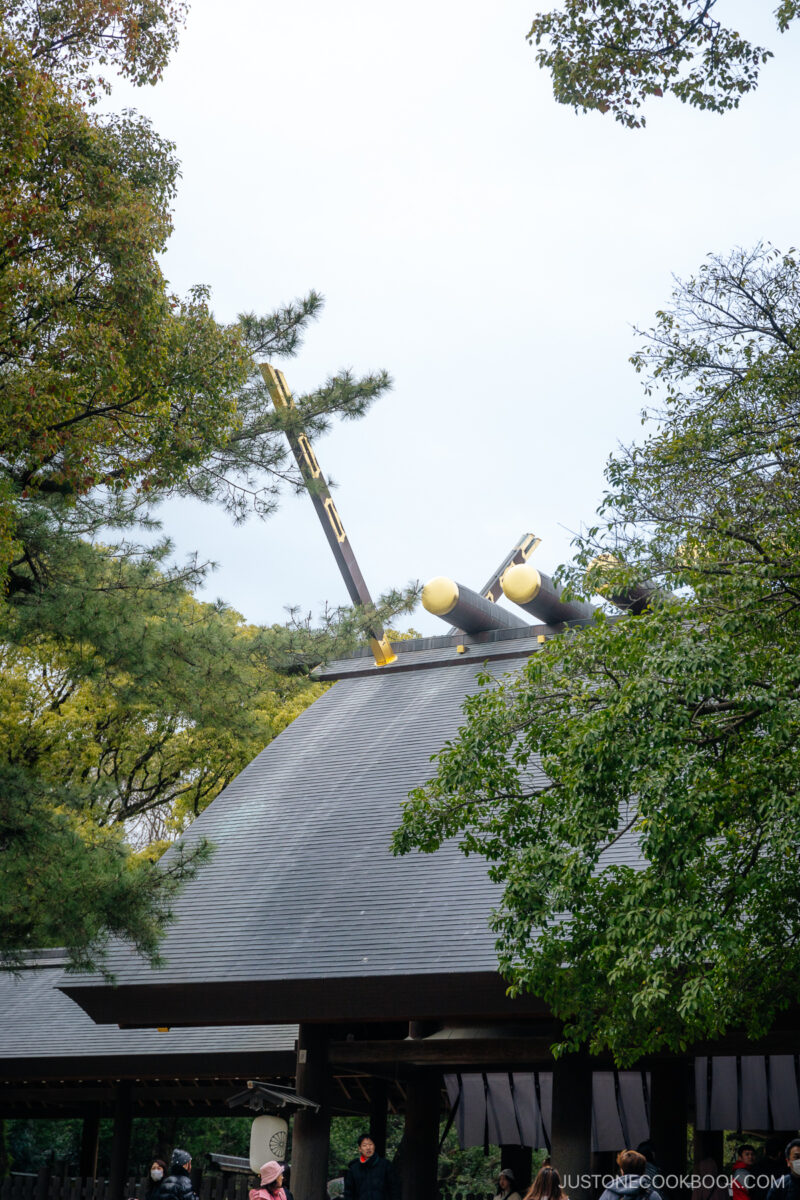

Next to the shrine, you can purchase an Omamori (good luck charm), I’m oming (fortune paper), or ema (wishing plaque). If you’re curious about shrine etiquette, read our complete guide here.
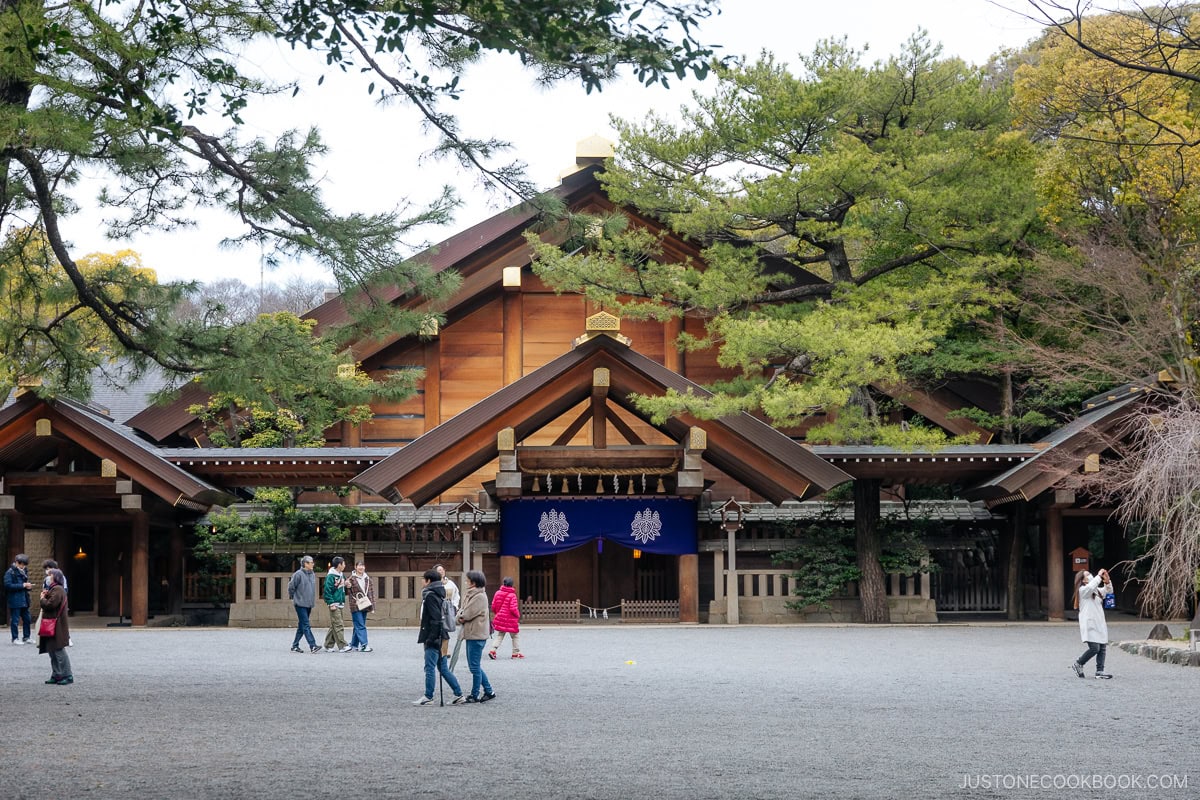



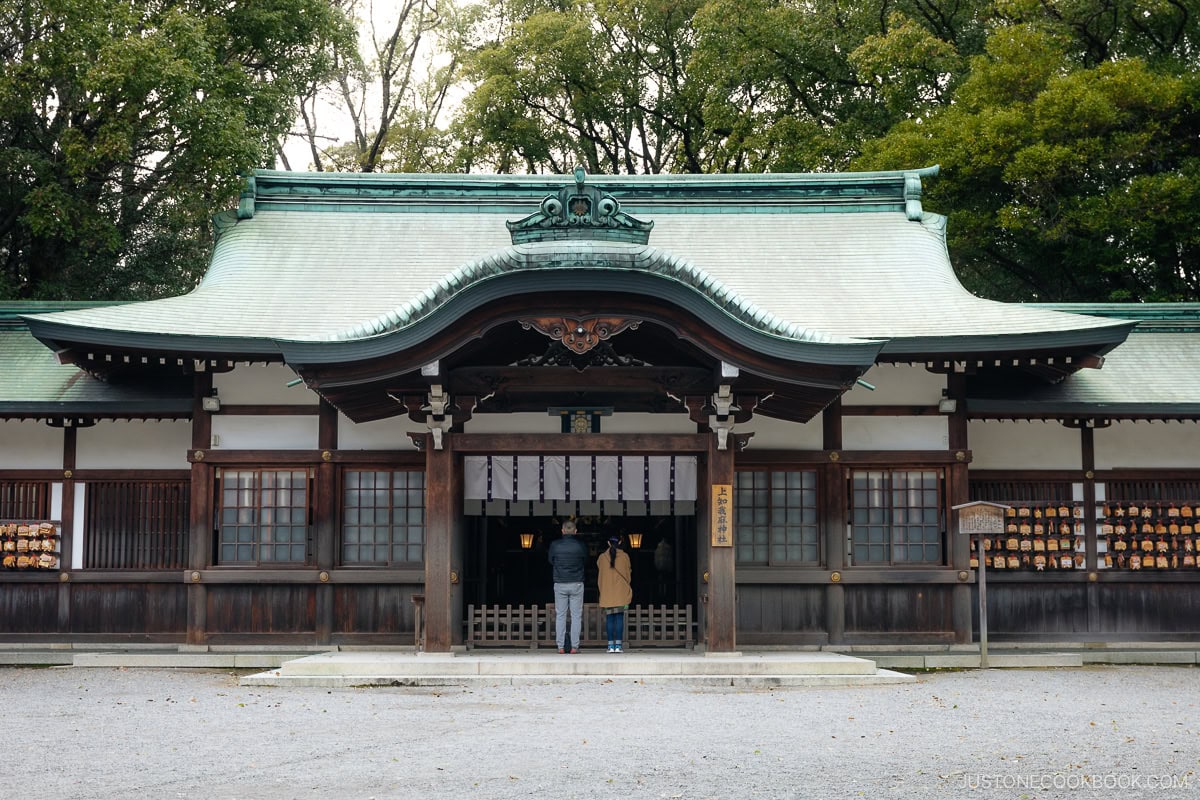

Throughout the year, there are also a host of festivals around the shrine’s grounds. The largest is the Atsuta Festival, held on June 5th, which marks the arrival of summer. It is the biggest festival in Nagoya and all of central Japan.
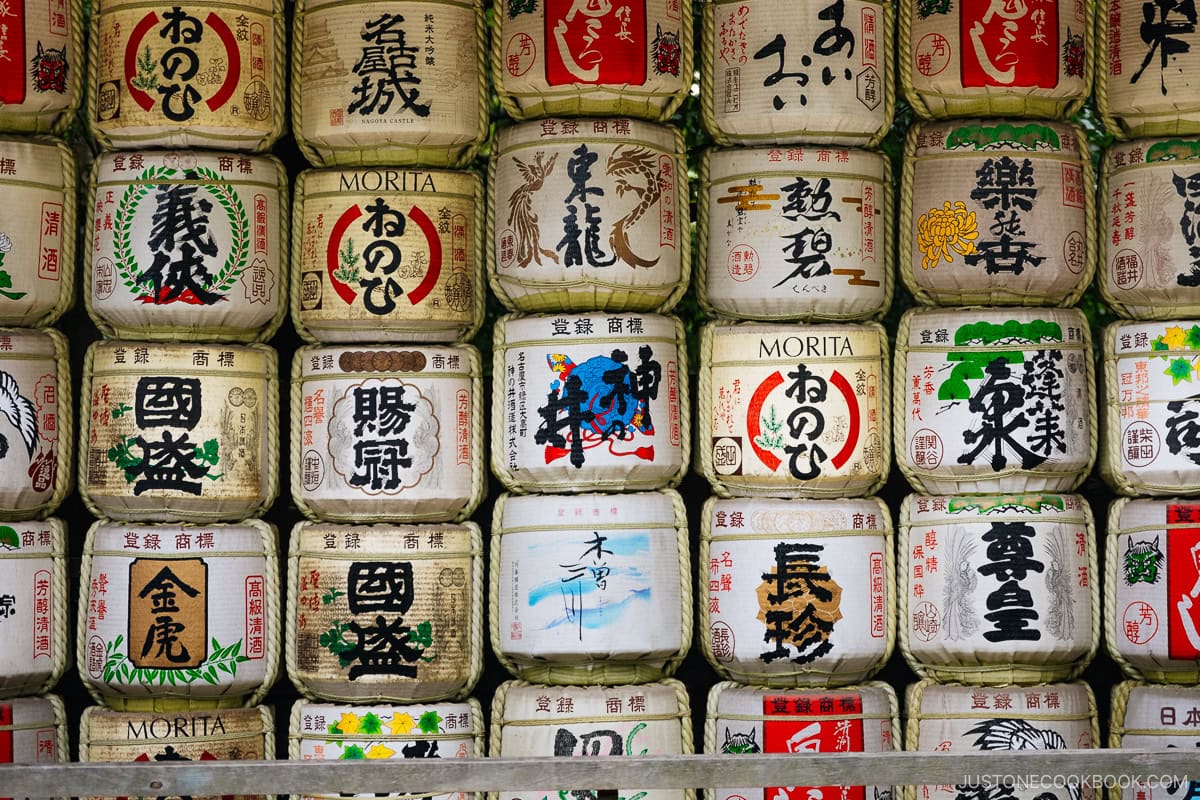

Throughout the day, beautifully crafted portable shrines are carried around the grounds, accompanied by taiko drumming, archery, street food, and dancing. One of the most popular events is the Atsuta Kagura, a traditional dance performed with flutes and drums that has been held here for nearly 1,800 years. As night falls, the trees are illuminated by 365 lanterns, and the festival culminates in a spectacular fireworks display over the park.
What to eat at Atsuta Shrine
Kishimen Udon – Kusunagi Plaza & Museum
While exploring the shrine’s grounds, take a moment to enjoy one of Nagoya’s local specialties, kishimen udon, at Kusunagi Plaza. These noodles are similar to traditional udon but have a thicker, flatter shape. The result is a mochi-mochi texture that is slightly chewier than regular udon.
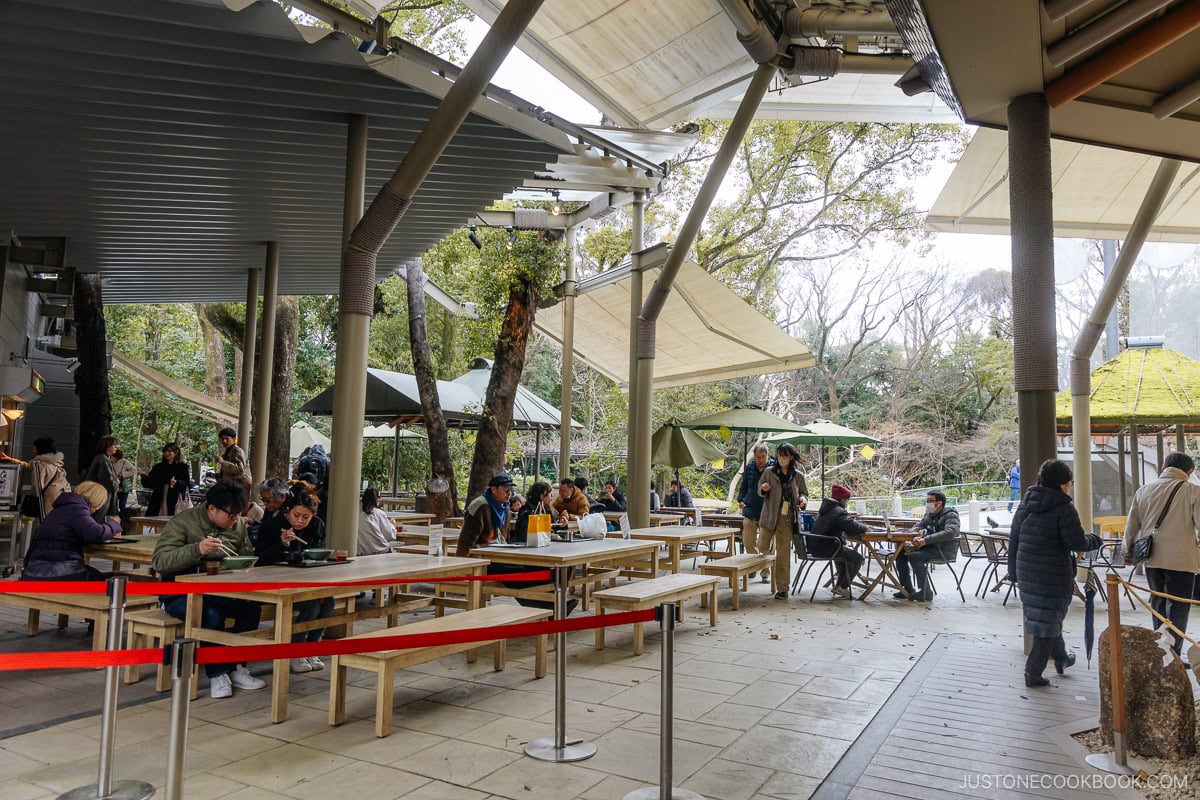

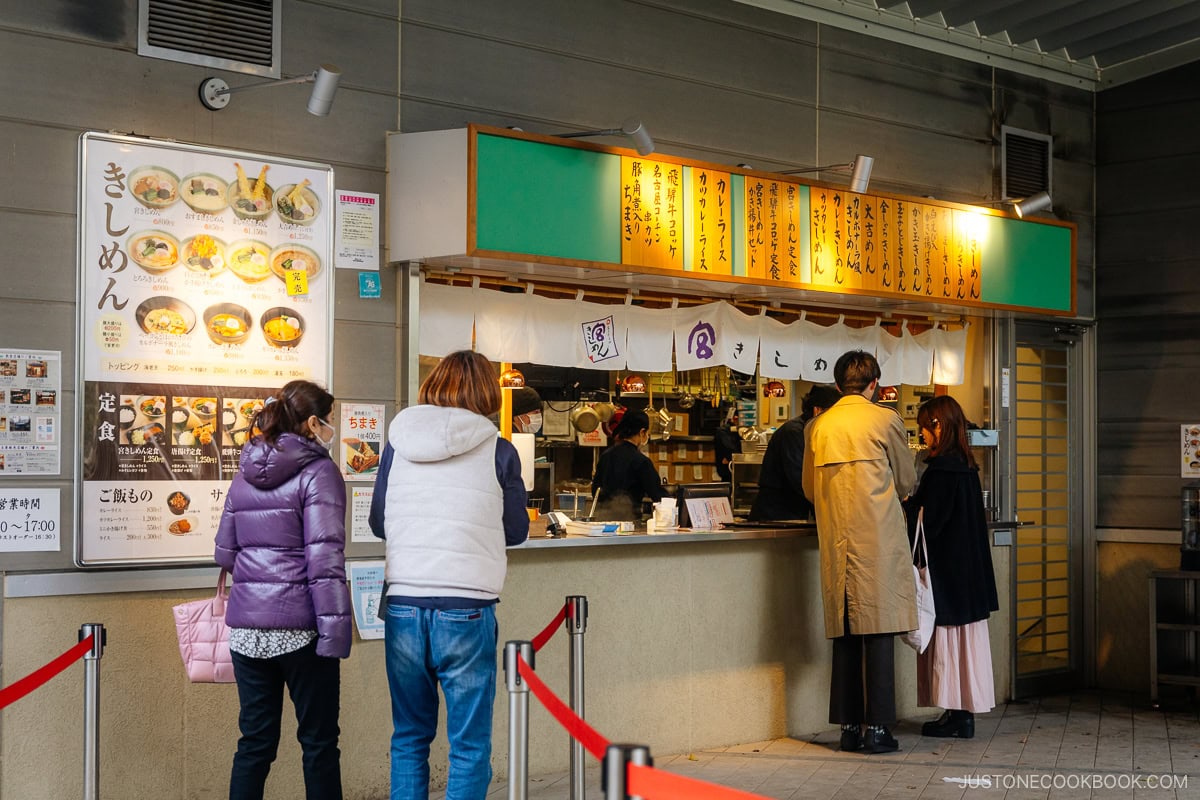

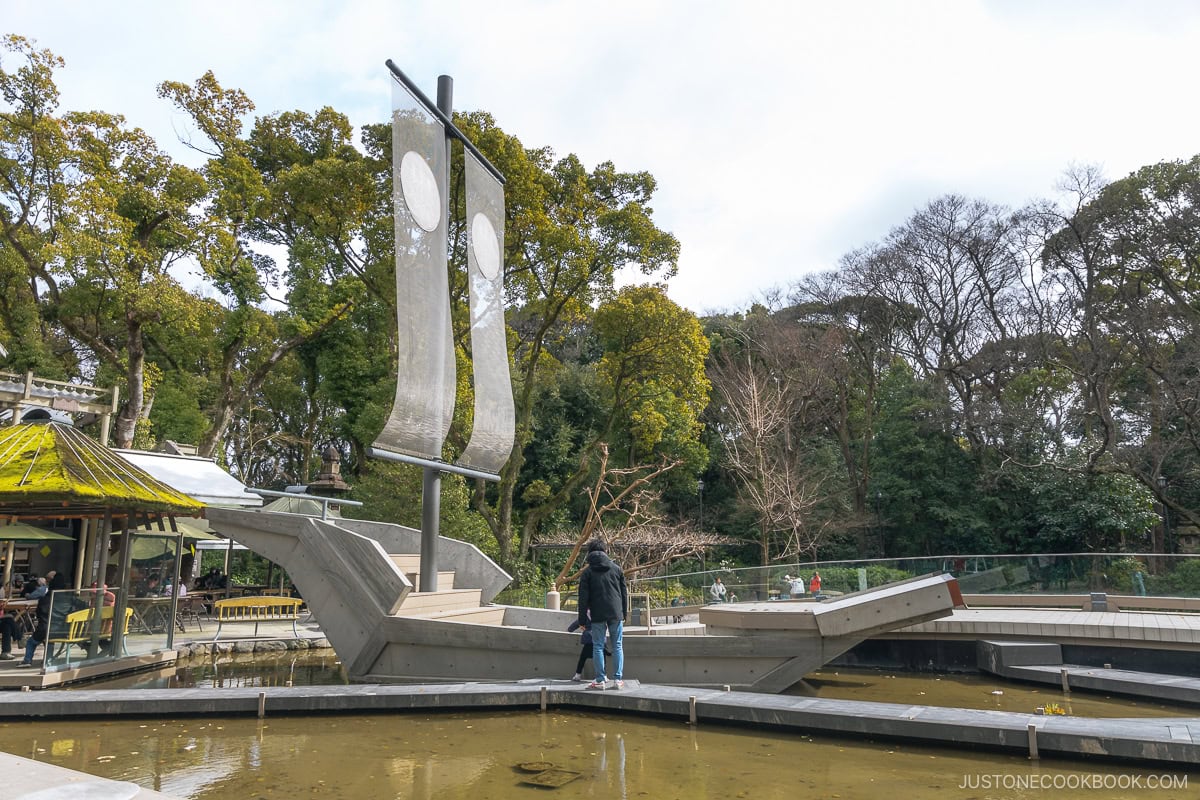

Head to Miya Kishimen, an outdoor restaurant, where you can enjoy a warm bowl of chewy noodles while taking in the park’s scenery. They offer various options, including curry, tempura, and even a carbonara flavor. I tried their signature dish, 宮きしめん (Miya Kishimen), which came with braised pork, spinach, negi, and was topped with bonito flakes.
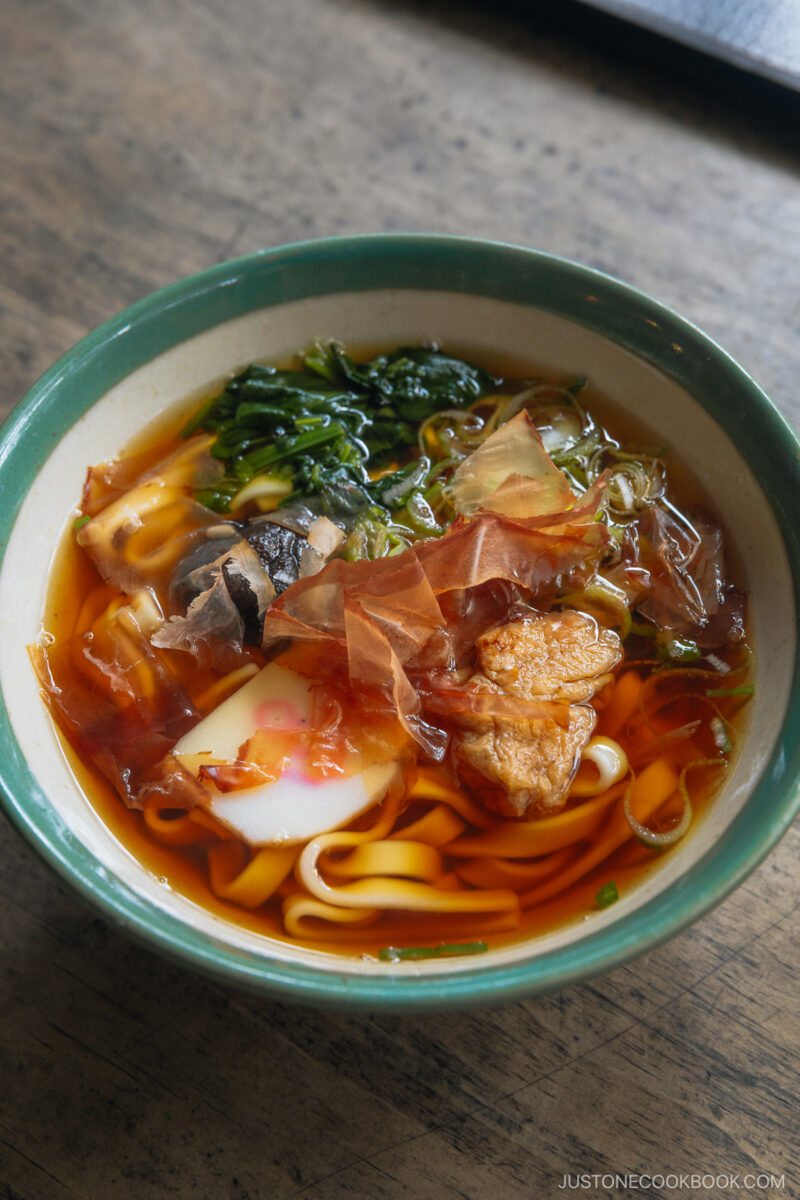

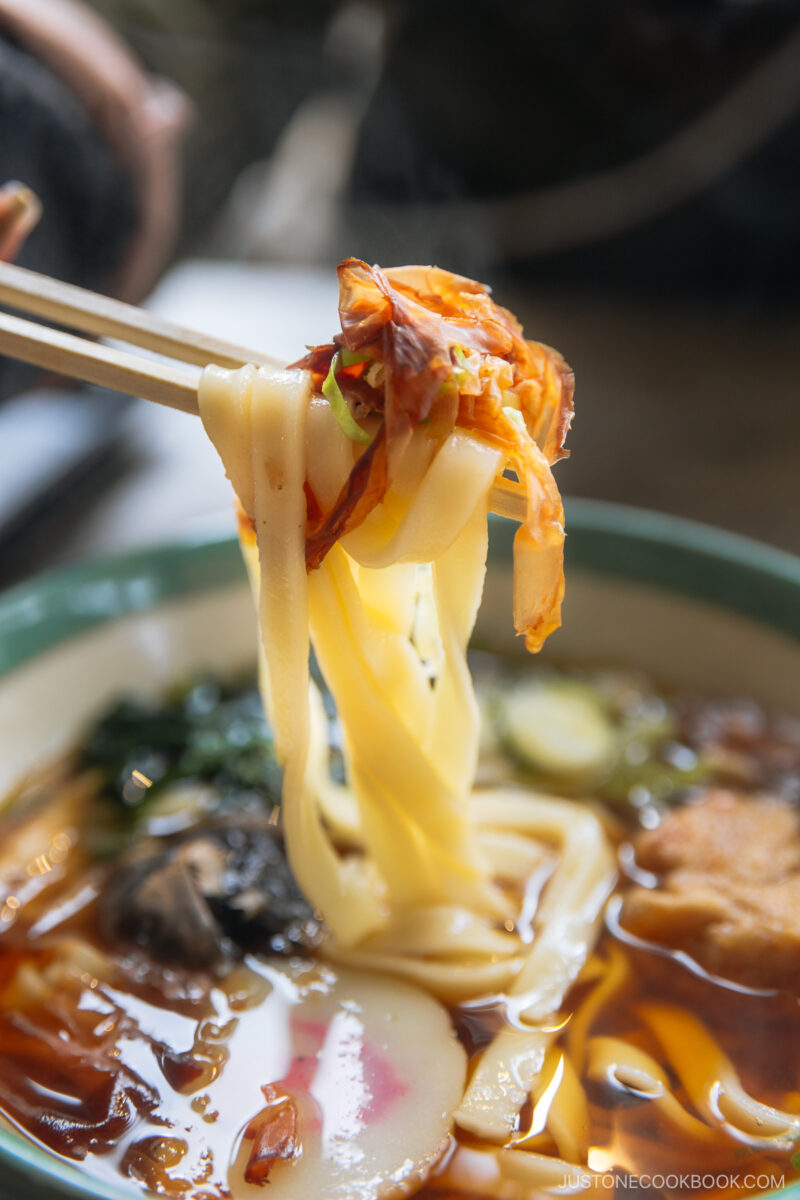

Kishimen quickly became one of my favorite dishes in Nagoya. The noodles’ texture is very satisfying, with a slight bite and chew. They also feel lighter and easier to eat than udon, making them a great dish to refuel while exploring the shrine.
Aside from Kishimen Udon, you can visit the souvenir shop and museum around the plaza. Or just sit and relax by the water!
Hitsumabushi – Atsuta Horaiken Jingu
Just outside the south entrance of the shrine’s grounds is Horaikena popular eel (eel) restaurant serving Hitsumabushi, another local Nagoya classic. Horaiken has multiple branches throughout the city, but the shop next to Atsuta is particularly busy with shrine visitors. Horaiken has been serving Hitsumabushi since 1873 and has even trademarked the name!
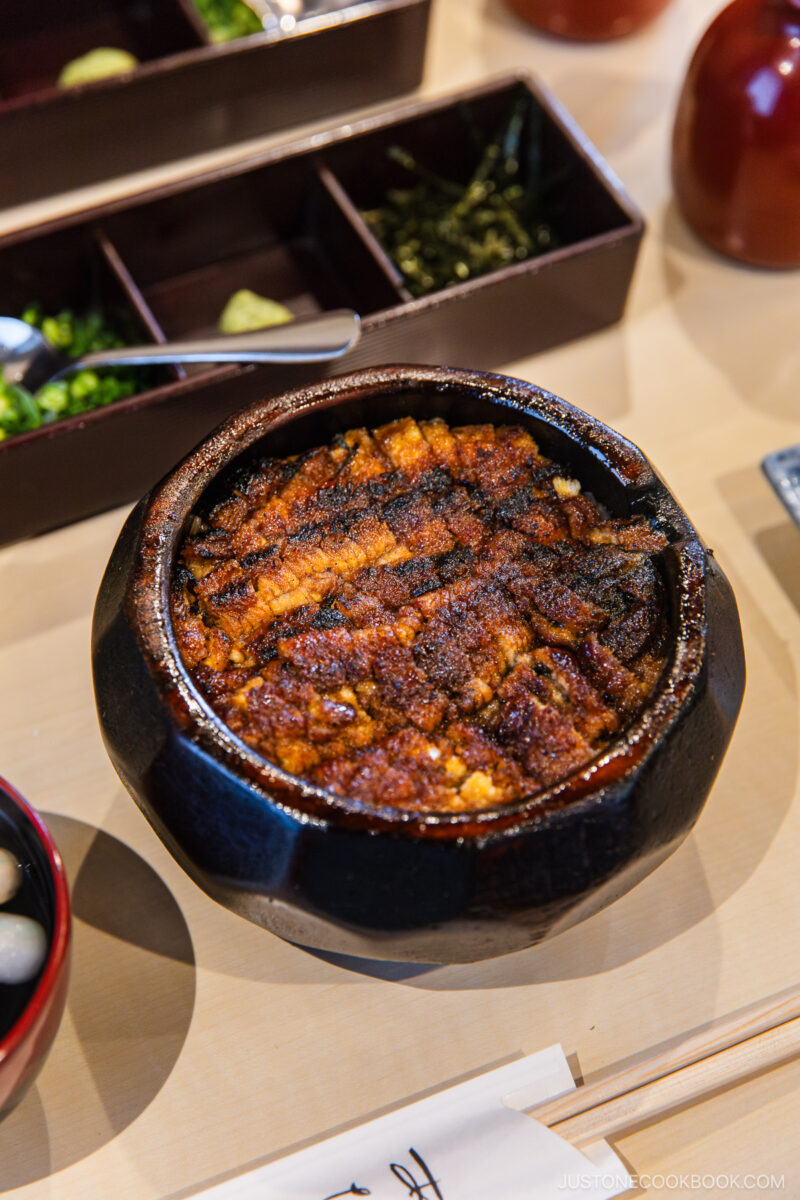

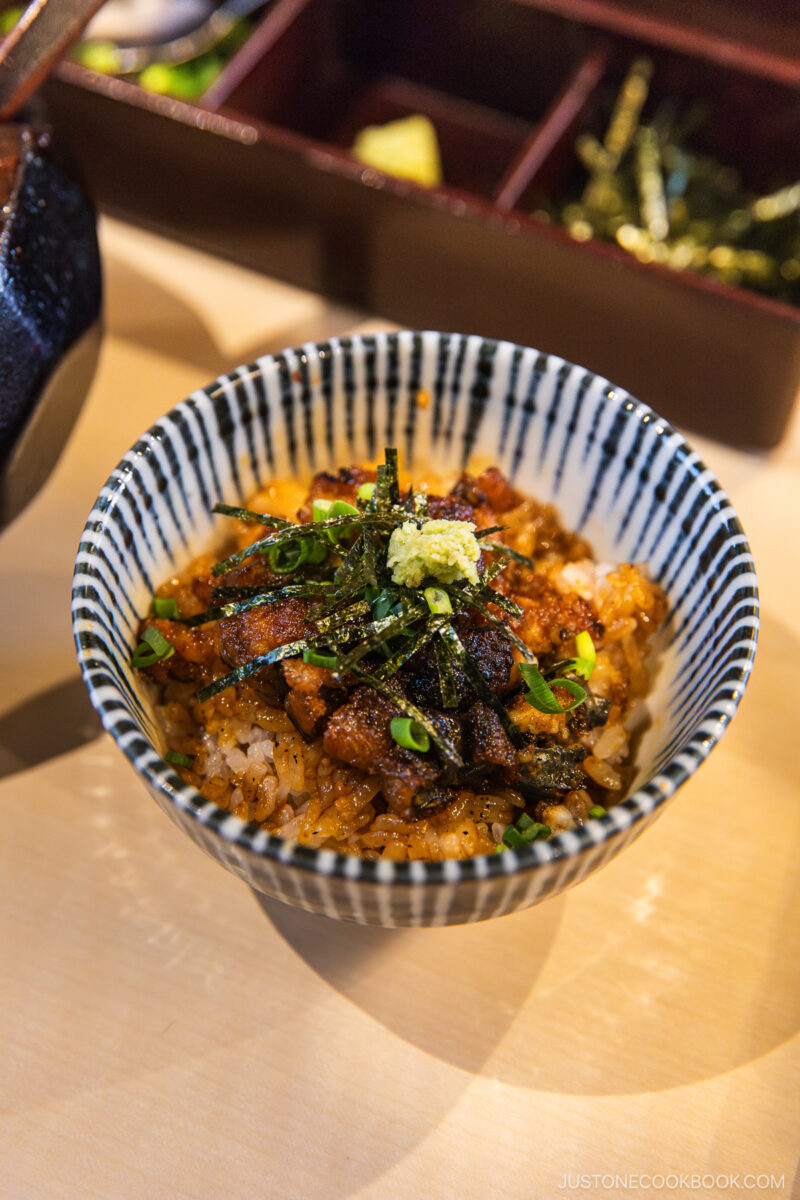

Hitsumabushi is a unique way of eating unagi that originated in Nagoya. The grilled unagi is served on top of a bowl of rice and accompanied by various garnishes such as scallions, wasabi, and seaweed. Hitsumabushi is meant to be enjoyed in four different ways, which you can check out in our complete Nagoya Food Guide!
The long lines at Horaiken are a testament to how delicious this dish is. You never tire of eating it, as you can mix and match it with all the garnishes. The eel is crisp on the outside and tender in the middle, and the sauce is sticky, salty, and subtly sweet. If there’s one dish you must try while in Nagoya, Hitsumabushi is it.
I hope you enjoy reading our guide to Atsuta Jingu. Filled with history, beautiful architecture and scenery, and delicious food, it’s a must-visit during your trip to Nagoya!


